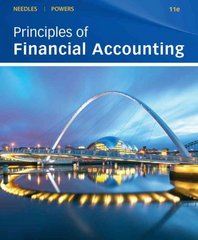On December 31, 2010, the stockholders equity section of Tsang Corporations balance sheet appeared as follows: Contributed
Question:
On December 31, 2010, the stockholders’ equity section of Tsang Corporation’s balance sheet appeared as follows:
Contributed capital
Common stock, $8 par value, 200,000 shares
authorized, 60,000 shares issued
and outstanding ........... $ 480,000
Additional paid-in-capital ........ 1,280,000
Total contributed capital ........ $ 1,760,000
Retained earnings ............ 824,000
Total stockholders’ equity ........ $ 2,584,000
The following are selected transactions involving stockholders’ equity in 2011. On January 4, the board of directors obtained authorization for 20,000 shares of $40 par value noncumulative preferred stock that carried an indicated dividend rate $4 per share and was callable $42 per share. On January 14, the company sold 12,000 shares of the preferred stock at $40 per share and issued another 2,000 in exchange for a building valued at $80,000. On March 8, the board of directors declared a 2-for-1 stock split on the common stock. On April 20, after the stock split, the company purchased 3,000 shares of common stock for the treasury at an average price of $12 per share; 1,000 of these shares subsequently were sold on May 4 at an average price of $16 per share. On July 15, the board of directors declared a cash dividend of $4 per share on the preferred stock and $0.40 per share on the common stock. The date of record was July 25. The dividends were paid on August 15. The board of directors declared a 15 percent stock dividend on November 28, when the common stock was selling for $20. The date of record for the stock dividend was December 15, and the dividend was to be distributed on January 5.
Required
1. Record the above transactions in Journal form.
2. Prepare the stockholders’ equity section of the company’s balance sheet as of December 31, 2011. Net loss for 2011 was $218,000.
3. Compute the book value per share for preferred and common stock (including common stock distributable) on December 31, 2010 and 2011, using end-of-year shares outstanding. What effect would you expect the change in book value to have on the market price per share of the company’s stock?
Common stock is an equity component that represents the worth of stock owned by the shareholders of the company. The common stock represents the par value of the shares outstanding at a balance sheet date. Public companies can trade their stocks on... Balance Sheet
Balance sheet is a statement of the financial position of a business that list all the assets, liabilities, and owner’s equity and shareholder’s equity at a particular point of time. A balance sheet is also called as a “statement of financial... Dividend
A dividend is a distribution of a portion of company’s earnings, decided and managed by the company’s board of directors, and paid to the shareholders. Dividends are given on the shares. It is a token reward paid to the shareholders for their... Par Value
Par value is the face value of a bond. Par value is important for a bond or fixed-income instrument because it determines its maturity value as well as the dollar value of coupon payments. The market price of a bond may be above or below par,...
Step by Step Answer:

Principles Of Financial Accounting
ISBN: 9780538755160
11th Edition
Authors: Belverd E Needles, Marian Powers





